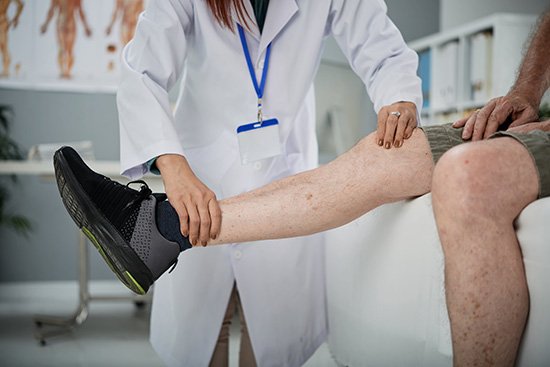What You Need to Know About Foot Pain and Heart Disease
Did you know that the first warning of heart disease could come from your feet? Yes, it's true. Some of your recent foot symptoms could be signs of more significant problems brewing in your body.
Foot Signals that Could Be Heart Disease
Have you ever started walking and noticed that your feet or legs hurt? You might have chalked it up to poor shoes or overdoing it on exercise. But, in fact, it could be the first sign of peripheral arterial disease (PAD).
With PAD, your lower extremities don’t get enough oxygen, which may make walking or exercising painful. But why aren't your legs and feet getting that oxygen?
According to the American Podiatric Medical Association, PAD is caused by a blockage or narrowing of the arteries in the legs when fatty deposits called plaque buildup. The plaque buildup causes the arteries to harden and narrow, which is called atherosclerosis. When the arteries harden and narrow, it makes it harder for oxygen-rich blood to travel from your heart to the rest of your body—especially those far-away legs and feet.
Causes and Risk Factors
PAD affects eight to 12 million Americans, and it increases your risk for serious cardiovascular conditions, such as heart attacks or strokes. PAD is also one of the leading causes of foot and leg amputations in the United States.
Risk factors for PAD include:
Smoking
High cholesterol
High blood pressure
Physical in inactivity
Obesity
Diabetes
Diagnosing PAD
Because PAD symptoms can look like many other diseases, it can be hard to diagnose. That's why it's essential to pay attention to small details. So, let's get back to that foot pain while you walk.
Not all foot pain is a sign of PAD. But if the pain shows up when you move and disappears when you rest, it's worth discussing with your doctor. If it's PAD, you may also notice achiness, fatigue, and pain not only in your feet but also in your calves, thighs or buttocks. Your lower legs and feet may get cold and change color and have a weak pulse or no pulse. With PAD, you may have foot or toe pain that disturbs your sleep and wounds or ulcers on the feet or toes that are slow to heal. However, many individuals with PAD don’t experience the typical symptoms.
If you’ve noticed any of these PAD warning signs, you should immediately tell podiatrist Dr. David Sullivan. The easiest way to diagnose PAD in your feet is with a pulse check during your physical exam. There are also accessible, non-invasive tests, like the ankle-brachial index, that detect PAD. And early detection is vital. Because, with lifestyle changes and medications, we can keep your disease in control. But, without treatment, your risk for serious cardiac events skyrockets.
Treating PAD
If you're diagnosed with PAD, there are several ways to treat the disease. Simple changes like quitting smoking, reducing your alcohol intake and choosing a healthier diet can make a big difference. Managing your blood pressure and blood sugar and lowering your cholesterol can also aid in treating PAD. It's also essential to exercise. While symptoms may worsen when you exercise, with time, you'll be able to walk longer with less pain. Finally, some individuals with PAD need medication or surgical interventions, but a specialist can help with those decisions.
Remember, undiagnosed heart conditions are dangerous. And foot pain could be the first sign of a problem. So, if it’s getting harder to walk, don’t wait. Schedule an appointment with Dr. David Sullivan right away, serving Westfield, Carmel, Fishers, Noblesville and Zionsville, Ind., to protect your feet and heart!


